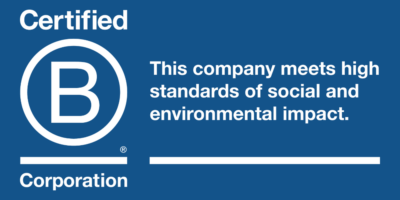Non-Correlated Growth: Finding Companies That March to Their Own Beat
In today’s highly correlated markets, finding companies that dance to their own rhythm is becoming increasingly valuable for investors seeking resilience through market cycles. At Riverwater Partners, we’ve built our investment approach around identifying businesses with truly idiosyncratic growth drivers – companies whose success hinges on unique, company-specific factors rather than broader economic conditions.
IDIOSYNCRATIC GROWTH:
The unique, company-specific factors driving a business’s success, independent of broader economic conditions or market trends.
Understanding Idiosyncratic Growth Drivers
Idiosyncratic drivers are those unique to individual companies, independent of general market movements and not related to the general market. While many firms rise and fall with economic cycles, we see real opportunities in businesses capable of zigging when the market zags. We believe that this distinctive approach not only helps to insulate portfolios during downturns but also contributes to alpha generation.
The Concentrated Portfolio Advantage
To truly benefit from these idiosyncratic growth drivers, however, investors must have the flexibility and conviction to act on them. That’s where portfolio construction comes in. By concentrating our investments in a select group of businesses, we ensure each holding is meaningful—amplifying the impact of company-specific insights and reducing the noise of broad market movements.
A focused portfolio significantly enhances our ability to identify and capitalize on truly idiosyncratic opportunities. Research supports this approach: a single-stock portfolio has a standard deviation of approximately 49%, whereas a 30-stock portfolio reduces this to about 21%. (Elton, Gruber, Brown, & Goetzmann, 2014). However, expanding to 100 stocks only further reduces volatility by a mere 1% – a difference most investors would never notice.
This insight underpins our strategy of maintaining concentrated portfolios of 25-40 holdings. This focused approach enables deeper due diligence, allowing our team to thoroughly identify and leverage truly idiosyncratic opportunities. Supporting this, our portfolios consistently exhibit lower volatility, illustrated by a beta of 0.79 for the Sustainable Value Strategy compared to the benchmark’s 1.00.
Real-World Examples of Idiosyncratic Growth
Let’s examine several companies in our portfolio that exemplify this non-correlated growth approach:
 Centrus Energy (LEU): Nuclear Opportunity Outside Economic Cycles
Centrus Energy (LEU): Nuclear Opportunity Outside Economic Cycles
Centrus Energy demonstrates a perfect example of an idiosyncratic growth driver. Their focus on uranium enrichment creates a business model disconnected from typical economic cycles. Operating in uranium enrichment, Centrus benefits from a secular growth driver disconnected from broader economic conditions. Its growth is driven by company-specific factors unique to the nuclear fuel cycle, rather than cyclical economic trends.
Coastal Financial Corp. (CCB): Banking Outside the Banking Box
Most banks trade very much in line with other banks – if you overlaid their stock charts, they would follow nearly identical patterns because banking is fundamentally a commodity business of making loans and taking deposits. What makes Coastal Financial distinctly different is their fintech business segment, which doesn’t behave like traditional banking.
Distinct from traditional banking peers, Coastal has developed a proprietary Banking-as-a-Service platform that allows them to serve large companies that need banking infrastructure but can’t operate as banks themselves. This business has been securing contracts with Fortune 500 companies, creating a growth avenue completely separate from traditional banking cycles. This innovation allows Coastal to potentially outperform when other banks struggle with interest rate pressures or credit concerns.
Palomar Holdings (PLMR): Finding Opportunity Where Others See Risk
Palomar Holdings represents another compelling example of idiosyncratic growth. As a specialty insurance company with approximately 50% of its business in California earthquake insurance, Palomar has developed unique capabilities in an area many competitors avoid. Their specialized innovation allows them to effectively underwrite risks others won’t touch, maintaining high returns while providing essential services.
What makes Palomar truly idiosyncratic is how they’ve capitalized on opportunity by developing products for environmental risks that others avoid. This specialized focus creates growth potential disconnected from broader insurance industry cycles or general economic conditions.
The Performance Impact of Idiosyncratic Drivers
Companies with truly idiosyncratic drivers often outperform during market stress because their fundamental growth stories remain intact even as macro concerns dominate headlines. We’ve observed this dynamic play out repeatedly in our portfolio:
- During market drawdowns: Companies with company-specific catalysts tend to exhibit more resilience as investors eventually recognize their growth remains on track despite broader economic concerns.
- During recovery phases: Businesses with idiosyncratic drivers can outperform because their success doesn’t depend on waiting for an economic tide to lift all boats – they create their own favorable conditions.
- During periods of high correlation: When macro fears drive most stocks to move in unison, companies with truly differentiated business drivers eventually break away as their unique stories reassert themselves.
These patterns explain why focusing on idiosyncratic growth can enhance risk-adjusted returns. By assembling a portfolio of businesses whose success depends more on their specific innovations, market positions, or business models than on GDP growth or interest rates, we create resilience through genuine diversification of growth drivers.
In fact, we believe that a focus on idiosyncratic investing has contributed to our results. The Riverwater Small Cap Strategy notably outperformed the Russell 2000 Index with a cumulative return of +14.66% versus -4.01% since inception (as of Q1 2025). Similarly, our Sustainable Value Strategy posted a 5-year return of 20.63%, significantly ahead of the Russell 2500 Value Index’s 16.65%, driven by selective investments with truly distinct growth catalysts.
Identifying Idiosyncratic Opportunities in Today’s Market
What characteristics should investors look for when seeking companies with idiosyncratic growth potential? Based on our experience, several factors stand out:
- Specialized capabilities in markets ignored or underserved by larger competitors
- Proprietary technology or methods that create sustainable competitive advantages
- Business models that operate outside traditional industry structures
- Companies addressing secular trends rather than cyclical patterns
- Unique assets or positioning that can’t be easily replicated
The common thread is finding businesses that control their own destiny rather than being primarily dependent on external economic factors for success.
Conclusion: Marching to a Different Beat
In a world where algorithm-driven trading and passive investing increasingly push stocks to move in tandem, the value of truly idiosyncratic growth drivers has never been greater. By focusing on companies that “march to their own beat” rather than following the economic parade, investors can build portfolios with greater resilience and opportunistic growth potential.
At Riverwater Partners, this approach forms a cornerstone of our investment philosophy. We believe that in the long run, companies with unique, non-correlated growth drivers offer the best opportunity to generate sustainable alpha – regardless of which way the economic winds happen to be blowing.
This commentary reflects the views of Riverwater Partners as of April 2025 and is subject to change without notice. It is provided for informational purposes only and does not constitute investment advice or a recommendation to buy or sell any securities. References to specific securities are for illustrative purposes only and may not be representative of all client portfolios. Any forward-looking statements or forecasts are based on assumptions that may not come to pass. Past performance is not indicative of future results. Investors should consult their financial adviser before making any investment decisions. These projections represent Riverwater’s internal estimates based on publicly available information and are not guarantees of future performance. Riverwater Partners and its clients may hold positions in the securities discussed, which may create a conflict of interest.
Links to third-party sites are provided for convenience and do not imply endorsement. Riverwater is not responsible for the accuracy or content of external sites.











